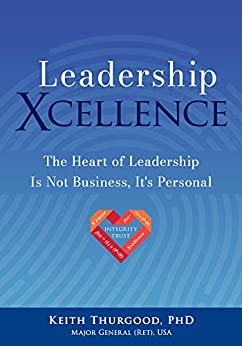Turning Challenges Into Opportunities
By General (Retired) Dennis Reimer , Sunday, January 01, 2017
After 37 years in the Army and another 13 years in the corporate world, I am convinced that the greatest determinant of success in these two worlds is leadership. I have been fortunate to lead organizations in both worlds---from one of the largest (the U.S. Army consisting of over 1 million soldiers) to one of the smallest (The Memorial Institute for the Prevention of Terrorism consisting initially of five people). What I have learned from that experience is that leadership is the common characteristic that most determines whether an organization is a high-performing organization. High-performing organizations spend a lot of time developing leaders, who in turn take care of their people and together achieve outstanding results. These organizations are more agile and are particularly adept at turning challenges into opportunities. They develop leaders who believe in and exemplify the core competencies of the organization but are also willing to adjust to change. This article explores some of the constants of good leadership and how organizations adapt to our changing world. DEFINITION: The best place to start is with a definition of leadership. It has been defined many ways, but the one I like best is listed in the Army Manual on Leadership (FM 22-100) “...influencing people----by providing purpose, direction, and motivation---while operating to accomplish the mission and improve the organization.” Any organization should be able to embrace this definition---whether they are conducting military operations, starting a new organization or growing a well established company.
We live in a time of unprecedented change. In fact some say that change is the only constant in today’s world. Change has been a part of history forever, but the difference today is the pace of change. The rapidity of that change makes it critical that organizations adjust to meet a changing environment or else they risk the possibility of becoming irrelevant. However change does not mean that everything is in a state of flux. Organizations must have anchor points---what they truly believe in, what sets them apart, and hopefully, makes them better. A “lock-step” approach will not take organizations where they want to be in the future. Nor will a “make it up as you go” approach. High-performing organizations adhere to a number of time tested fundamentals.
MISSION: Transactional leadership focuses a lot on what it is that an organization wants to accomplish and how they can make it happen. Good organizations spend a lot of time discussing the mission and the role of every member of the organization in accomplishing that mission. They achieve “buy-in.” Generally these organizations have multiple layers of leadership and each has a critical role in accomplishing that mission. The army breaks down leadership in three levels---strategic, operational, and tactical
At the top level, the strategic level, much time is spent on Vision---where does this organization want to be in 10-20 years and what is the path to that destination. This is hard work. It is difficult to determine what is going to happen next week let alone what will happen in a year, 5 or certainly 20 years. Nonetheless, unless time is spent determining where an organization wants to go, they tend to wander aimlessly and become extremely frustrated with their work.
At the lowest level of leadership---the tactical level----the organization is focused on developing the skill base necessary to accomplish the current job and training people to be more productive by improving their job skills or adjusting to new technologies. Whether it is introducing a new product, winning a contract, or conducting a complex military maneuver, individuals need to know what is expected of them and how best to do their part. This, of course, means the leaders must be well trained in these tasks in order to train their people and truly care about the people who work for them. Immediate supervisors must also evaluate subordinates in order to identify those with exceptional potential who can be moved ahead more quickly in order to strengthen the leadership base of the organization.
Finally the mid-level (operational) leaders/supervisors are very critical in this pyramid of leaders. They bridge the gap between the strategic and tactical. They must understand both the organization’s mission and vision. They demonstrate the link between the two, motivate others, and provide purpose and direction through their experience and knowledge. They not only keep the trains running, but they ensure they are on the right track and on time--easier said than done.
PHILOSOPHY: It has become very popular for leaders to develop a leadership philosophy and share that with their subordinates. If done properly that is a very helpful thing. It allows people to know what the boss believes in and what he/she thinks is important. Good leaders spend a lot of time working on their leadership philosophy so that they send the right signals to those under their supervision. Most importantly they must practice what they preach. In the good organizations, there is a link amongst the different levels of leaders----they all pull in the same direction. A “cascading” of leadership philosophies helps ensure unity of effort. The higher up one goes in an organization the broader the leadership philosophy. For example as Chief of Staff U.S. Army, I had three principles that were important to me and that I expected subordinates to embrace: 1) do what is right every day---legally and morally, 2) be the best you can be, and 3) do unto others as you would have them do unto you in similar circumstances. I felt that was broad enough for all leaders in the organization and gave them lots of freedom but reflected what I expected of them. I took every opportunity to explain that philosophy to all levels of leadership.
One of the key advantages of sharing a leadership philosophy is that it makes an organization more agile. Subordinate leaders know the left and right limits of their actions and know that if they act in the absence of orders and do so in accordance with the philosophy that their leaders will back them up. This builds trust between leaders and followers and inspires teamwork! It also is one of the things that allow good organizations to turn challenges into opportunities.
VALUE BASED: Good organizations have a set of values in which they believe. In the mid-‘90s, the Army Leadership reviewed and reaffirmed our values as Loyalty, Duty, Responsibility, Selfless Service, Honor, Integrity, and Personal Courage (LDRSHIP). It took us awhile to work through all that, but it was time well spent. Things were changing so fast after the end of the Cold War that we felt we needed these specific anchor points to help us negotiate this sea of change. For us, this was not simply an academic drill; we spent a lot of time teaching new recruits what these values meant, and we asked subordinate leaders to exemplify these values as we dealt with the transition to a Post-Cold War environment. (A detailed description of these values can be found in FM 22-100.)
FEEDBACK: Good leaders also want and seek honest feedback---both from their bosses and their subordinates. People need to feel important and want to be genuinely valued for their contribution. Often the best solutions come from those who are closest to the problem. So many times you find people who have the solution but when asked why they haven’t told anybody, they say no one asked. Leaders have to take the time to listen--really listen--to their people. This can be time consuming, but I doubt that there is anything that produces better results. Listening engenders trust and inspires confidence. It is much more time consuming to not do it. There are various ways to do it, but the key thing is to just do it.
FRAMEWORK: Good organizations tie all these fundamentals together and synchronize the efforts of their organization. One technique that helps is to look at Vision, Organizational Goals, and Individual Objectives in a systematic way. If you stop and think about it the Vision, Goals, and Objectives must be aligned or the organization will not be pulling in the same direction. From the vision flows the goals of an organization and from the goals flow the individual objectives; tie them together with some sort of monitoring system, and you have a high-performing organization.
CLOSING: General Creighton W. Abrams used to say that “the Army is not made up of people; the Army is people”---a subtle way of indicating how important people are to all organizations. This has been true throughout history, but in this fast-changing world in which we live, it has never been more important. Good organizations---corporate or military---are rooted in values, develop caring leaders who lead by example, motivate their people and function inside a proper organizational framework---and they turn challenges into opportunities. Make no mistake---leadership is the difference between good, mediocre, and bad organizations. It always has been and it always will be.
General Dennis Reimer
 ExpertiseLeading large organizations, managing change, strategic planning, crisis management, synchronizing policy and execution, leader development ExperienceGeneral Dennis J. Reimer graduated from the United States Military Academy in 1962 and was commissioned in the Field Artillery. He has held numerous command and staff positions throughout 37 years of active service to... Read More +
ExpertiseLeading large organizations, managing change, strategic planning, crisis management, synchronizing policy and execution, leader development ExperienceGeneral Dennis J. Reimer graduated from the United States Military Academy in 1962 and was commissioned in the Field Artillery. He has held numerous command and staff positions throughout 37 years of active service to... Read More +

"Leaders don't have bad days...you have to keep cheering your people on, play hurt when necessary, and always be optimistic."
General Dennis Reimer
More +
"Leaders don't have bad days...you have to keep cheering your people on, play hurt when necessary, and always be optimistic."
More +
"Leaders don't have bad days...you have to keep cheering your people on, play hurt when necessary, and always be optimistic."
Turning Challenges Into Opportunities
Leadership Xcellence: The Heart of Leadership Is Not Business, It's Personal
Major General (Retired) Keith Thurgood, Ph.D.
Major General (Retired) Keith Thurgood, Ph.D.





